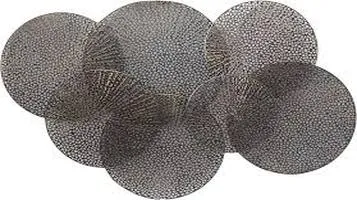Best Fabrics for Work Uniforms
When selecting fabrics for work uniforms, durability, comfort, and ease of maintenance are key considerations. Cotton, known for its breathability and softness, is a popular choice, offering comfort for long hours. However, blending cotton with polyester enhances durability and wrinkle resistance, making it ideal for work environments requiring a polished appearance. Polyester alone is another strong contender due to its resilience and quick-drying properties. For jobs demanding high durability, such as construction or mechanical work, canvas or denim provides excellent strength. Wool blends are suitable for colder climates, offering warmth and a professional look. Additionally, fabrics with moisture-wicking properties, such as technical synthetics, keep wearers dry and comfortable in active or warm settings. These fabric choices ensure functionality and professionalism across various industries.

When it comes to work uniforms, the choice of fabric plays a pivotal role in defining comfort, durability, and functionality. Whether you're dressing a team of chefs, medical professionals, or factory workers, selecting the right material ensures that the uniforms not only look good but also stand up to the rigors of daily use. Below, we review some of the best fabrics for work uniforms, evaluating them based on criteria such as comfort, durability, ease of care, and suitability for various work environments.
1. Cotton
Pros: Cotton is often the go-to fabric for work uniforms due to its breathability and comfort. It's a natural fiber that allows for excellent air circulation, making it ideal for warm environments or jobs that require physical exertion. Cotton is also hypoallergenic, making it suitable for individuals with sensitive skin.
Cons: One downside is that 100% cotton can wrinkle easily and may shrink when washed. However, these issues can be mitigated by opting for cotton blends or by using modern finishing techniques that enhance wrinkle resistance and durability.
Best For: Medical uniforms, casual office wear, and hospitality uniforms.
2. Polyester
Pros: Polyester is a synthetic fabric known for its durability and resistance to shrinking and stretching. It retains its shape well and is less likely to wrinkle compared to natural fibers. Polyester is also quick-drying and moisture-wicking, which makes it suitable for active work environments.
Cons: Polyester can be less breathable than natural fabrics, which may make it uncomfortable in hot conditions. However, advancements in textile technology have led to the creation of breathable polyester blends that alleviate this issue.
Best For: Industrial uniforms, sportswear, and outerwear.
3. Poly-Cotton Blends
Pros: Poly-cotton blends combine the best of both worlds: the comfort and breathability of cotton with the durability and wrinkle resistance of polyester. These blends are highly versatile and suitable for a wide range of work environments. They are also generally easier to care for, as they resist shrinking and wrinkling.
Cons: While poly-cotton blends offer a good balance, they may not perform as well as 100% cotton in terms of breathability or as well as 100% polyester in terms of durability. However, for many applications, they offer a practical compromise.
Best For: Healthcare uniforms, hospitality uniforms, and general office wear.
4. Nylon
Pros: Nylon is another synthetic fabric known for its exceptional strength and durability. It is resistant to abrasions, making it ideal for work environments where uniforms are subject to heavy wear and tear. Nylon also has excellent moisture-wicking properties, making it suitable for active jobs.
Cons: Like polyester, nylon can be less breathable, which might lead to discomfort in hot conditions. It is also prone to pilling over time. However, these issues can be mitigated by choosing high-quality nylon blends.
Best For: Outdoor work uniforms, tactical gear, and industrial uniforms.
5. Spandex (Elastane)
Pros: Spandex, also known as elastane, is famous for its elasticity. When blended with other fabrics, it adds stretch, allowing for greater freedom of movement. This makes it an excellent choice for jobs that require a high degree of physical activity. Spandex blends are also resistant to wrinkles and retain their shape well.
Cons: Spandex is usually not used on its own but blended with other fabrics. While it provides stretch, it can also retain heat, making it less suitable for hot environments unless blended with breathable fabrics.
Best For: Athletic uniforms, healthcare uniforms, and any job requiring extensive physical activity.
6. Wool
Pros: Wool is a natural fiber known for its excellent insulation properties, making it ideal for colder environments. It is also naturally flame-resistant, adding an extra layer of safety in hazardous work conditions. Wool is durable and can be treated to be machine washable.
Cons: Wool can be more expensive than synthetic fabrics and may require special care to maintain its appearance and functionality. It is also heavier, which might not be suitable for all work environments.
Best For: Cold-weather uniforms, formal office wear, and protective clothing.
Conclusion
Choosing the right fabric for work uniforms is crucial for ensuring that employees remain comfortable, safe, and presentable throughout their workday. Each fabric comes with its own set of advantages and disadvantages, making it essential to consider the specific needs of your work environment.
For general use, poly-cotton blends offer a versatile and practical option, balancing comfort and durability. For more specialized needs, such as high durability or enhanced breathability, fabrics like polyester, nylon, and spandex blends may be more appropriate. In colder climates or more formal settings, wool stands out as a superior choice.
Ultimately, the best fabric for work uniforms will depend on the unique demands of the job, the work environment, and the specific preferences of the wearers. With careful consideration, you can select a fabric that meets all these criteria, ensuring that your team stays comfortable, professional, and ready for anything the workday brings.






